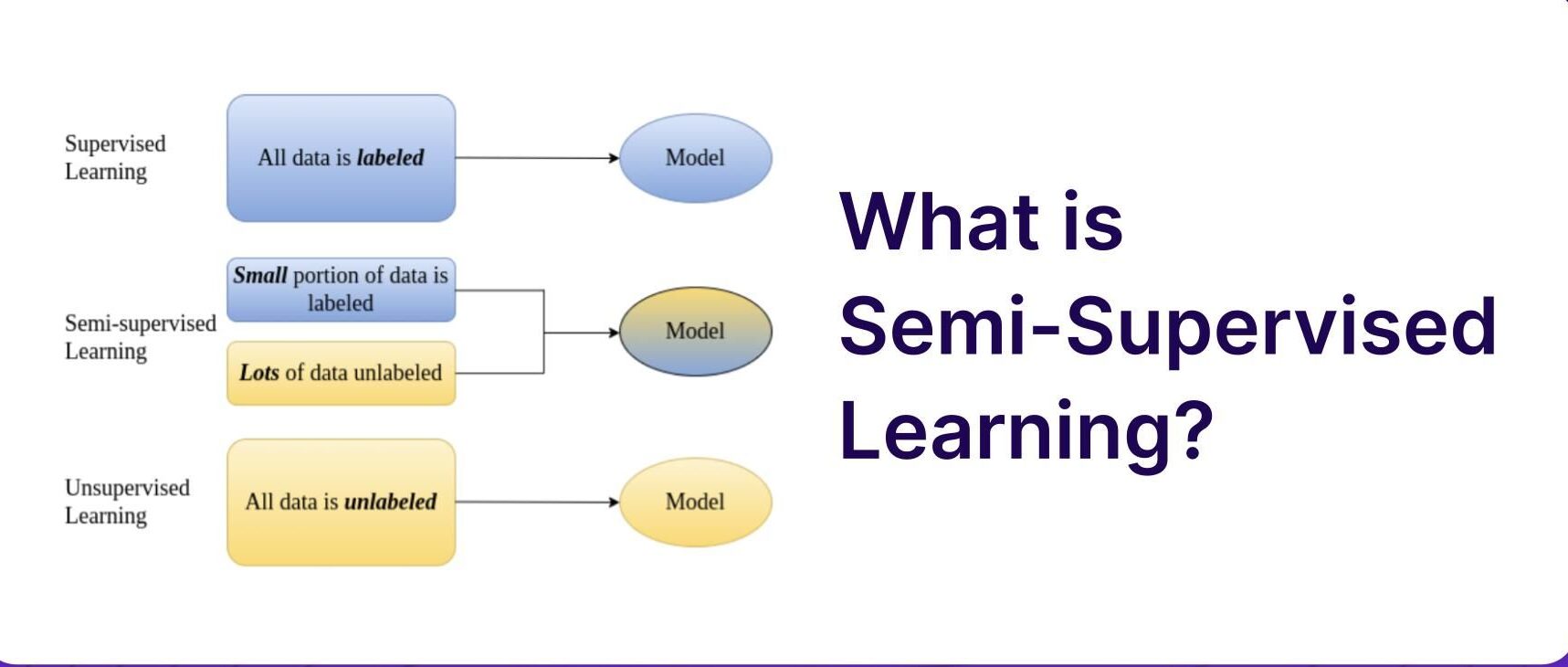A Brief History: Who Developed Semi-Supervised Learning?
The concept of semi-supervised learning (SSL) emerged in the late 1990s to address challenges in leveraging unlabeled data for machine learning. Researchers like Xiaojin Zhu played a significant role in formalizing SSL techniques. Over time, it has become a key approach in data-driven industries such as healthcare, finance, and public policy, where labeling data is costly and time-intensive.
What Is Semi-Supervised Learning?
Semi-supervised learning is a machine learning approach that uses a small labeled dataset alongside a large unlabeled dataset. It bridges the gap between supervised learning, which requires fully labeled data, and unsupervised learning, which uses none.
It works like teaching a child to recognize animals. With just a few labeled examples, such as “This is a cat,” the child learns to generalize and identify similar animals from unlabeled pictures. Similarly, SSL enables models to learn effectively from limited labeled data.

Why Is It Used? What Challenges Does It Address?
Semi-supervised learning tackles several challenges in data processing and model training:
- High Labeling Costs: Minimizes the reliance on expensive manual labeling.
- Utilization of Unlabeled Data: Unlocks the potential of abundant unlabeled datasets.
- Improved Generalization: Enhances model performance by exposing it to diverse examples.
Without SSL, organizations often face high costs, inefficient workflows, and less effective models due to limited labeled data.
How Is It Used?
- Start with Labeled Data: Train the model on a small, annotated dataset.
- Incorporate Unlabeled Data: Apply methods such as pseudo-labeling or consistency regularization to utilize unlabeled examples.
- Iterative Refinement: Retrain the model iteratively, improving its predictions over time.
Different Types of Semi-Supervised Learning
- Self-Training: Models generate pseudo-labels for unlabeled data and use them for further training.
- Consistency Regularization: Ensures predictions remain consistent across transformations of unlabeled data.
- Graph-Based Methods: Propagates labels through a graph structure to classify unlabeled points.
Key Features
- Cost-Efficient: Reduces reliance on expensive labeling efforts.
- Scalable: Effectively handles large datasets with minimal labeled examples.
- Versatile: Suitable for tasks like classification, clustering, and regression.
Software and Tools Supporting Semi-Supervised Learning
- Python Libraries:
- Scikit-learn: Offers label propagation and label spreading for SSL tasks.
- TensorFlowand PyTorch: Enable implementation of advanced semi-supervised learning techniques.
- FastAI: Provides user-friendly tools for building SSL models.
- Platforms: Interactive environments like Google Colab and Jupyter Notebooks facilitate experimentation with SSL methods.
3 Industry Application Examples in Australian Governmental Agencies
- Healthcare (Department of Health):
- Application: Predicting disease patterns from medical records.
- Use of SSL: Combines a small labeled dataset with vast amounts of unlabeled medical data, improving prediction accuracy.
- Environmental Management (Department of Agriculture, Water, and the Environment):
- Application: Monitoring wildlife populations using satellite imagery.
- Use of SSL: Classifies unlabeled satellite images effectively by learning from a small labeled dataset.
- Public Policy (Australian Bureau of Statistics):
- Application: Detecting demographic trends in census data.
- Use of SSL: Leverages partially labeled census datasets to forecast trends in underrepresented regions.
How interested are you in uncovering even more about this topic? Our next article dives deeper into [insert next topic], unravelling insights you won’t want to miss. Stay curious and take the next step with us!








